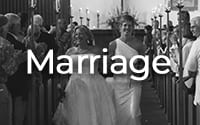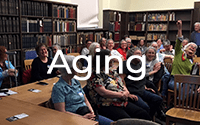political measures
political measures
Thank you, homophobes! The only way LGBTQ people could beat the series of hateful and homophobic political measures that rocked Oregon for two decades was to “come out” and let their families, friends, neighbors, and co-workers know that they were gay. Ironically, these attacks on lesbians and gay men led to a stronger LGBTQ movement and more committed allies.

“This was very personal. This wasn’t politics. This was my life.”
– Debby Martin –
All Eyes on Oregon: The Anti-Gay Measures
“Human garbage,” is what Anita Bryant called gay and lesbian people in her 1977 Save The Children campaign. This ugly but very successful campaign repealed a Dade County, Florida ordinance protecting gay and lesbian civil rights, and it set the stage for similar right-wing attacks in Oregon and across the country. Eugene made headlines the following year when the majority of voters in the supposedly liberal city favored Referendum 51, overturning the City’s ordinance that protected gay men and lesbians from discrimination in housing and employment and devastating Eugene’s gay and lesbian community. Many gay men moved to San Francisco at this time, where City Supervisor Harvey Milk and lesbian activist Sally Miller Gearhart exhorted the gay community to “Come out, come out, wherever you are,” building political support against the similar 1978 Proposition 6, which would have banned gay men and lesbians from teaching or working in California public schools.
In the mid-1980s, as gay men and lesbians gained traction in the Oregon courts and among political leaders, the Oregon Citizens’ Alliance (OCA), a group of conservative Republicans led by Lon Mabon, emerged. As with many of the religiously-motivated conservative groups established in this era, the OCA actively pursued an issue that would confirm their status as a major political force in state politics. When Governor Neil Goldschmidt issued an executive order in 1988 barring all state agencies from discriminating on the basis of sexual orientation, the OCA jumped at the chance to showcase its conservative political influence and brought the Governor’s order to the voters with Measure 8. Fifty-three percent of voters opted to overturn the order and to make such protections illegal for state government employees. A state appellate court later overturned the initiative (with one of the Eugene lesbian narrators as plaintiff in the case), but the OCA’s ballot box victory boosted its status from fringe group to major player in Oregon.
Between 1992 and 2000 the OCA initiated a series of state measures designed to both limit gay rights and tie up LGBT advocacy resources that would have been deployed elsewhere. Measure 9, the OCA’s 1992 initiative, asked voters to constitutionally enshrine “homosexuality, pedophilia, sadism, and masochism” as equally “abnormal, wrong, unnatural and perverse.” The OCA persuaded many voters that gays and lesbians were a sinister threat to children. The virulent language of the campaign and its claim that gay people demanded “special rights” made Measure 9 a lightning rod in every town and city in Oregon and captured the nation’s attention. Violence against gay men and lesbians, including assault and murder, rose precipitously and while many became fearful of being visible, they also knew that making connections with straight voters was the only way to defeat the measure. The narrators recall this period as both terrifying and politically galvanizing. With each measure that sought to diminish their rights and malign their value, they responded as a community, each woman bringing her unique talents and skills to the cause, validating the hard-won recognition of their full humanity. Against most predictions, Oregon voters defeated Measure 9, and courts ruled the subsequent anti-gay bylaws that the OCA passed in many small cities unconstitutional. Many of the narrators ironically credit the OCA with forcing lesbians and gay men to come out, learn political strategies, and build state-wide organizations such as Basic Rights Oregon. The current generation of Oregon LGBTQ politics is built on this history and on the work and experiences of these narrators.

GALLERY
FOR TEACHING AND RESEARCH
SPOTLIGHT: VOTER’S PAMPHLET EXCERPTS FROM ANTI-GAY MEASURES 8 AND 9
The Oregon voter’s pamphlet includes referendum language and paid arguments for and against measures. Written opinions are not fact-checked and can be submitted to either category, often providing satiricial commentary.
Ideas
Visit the Eugene Lesbian Oral History Project archive to read about the lawsuit Harriet Merrick and the ACLU brought against the Oregon State Board of Education in the wake of Measure 8.




































